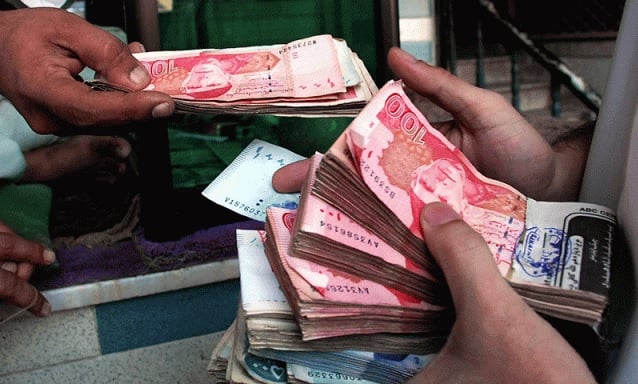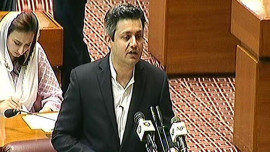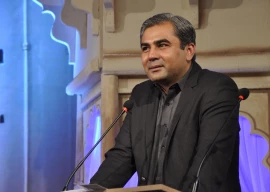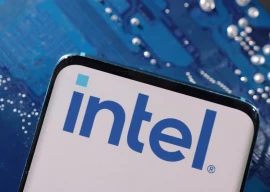
Official figures released by the Ministry of Finance on Tuesday confirmed that the PTI government exceeded its budget deficit target by 82% which stood at Rs3.444 trillion in fiscal year 2018-19. The budgetary deficit target was just Rs1.9 trillion.
The 8.9% deficit was the highest in the past eight years in terms of the size of national economy. In absolute terms, it was the highest-ever deficit, which broke last year's record of Rs2.3 trillion, showed the finance ministry data.
The disappointing results have made the 2019-20 budget irrelevant within two months of its approval by the National Assembly. The results have also put a question mark over the government's ability to deliver on promises made under the $6-billion agreement with the International Monetary Fund (IMF).
The budget deficit in first year of the PTI government was worse than last years of the Pakistan Peoples Party (PPP) and Pakistan Muslim League-Nawaz (PML-N) governments. Traditionally, the governments tend to spend more in their last year in power compared with the first year which has historically remained the year of consolidation.
In the second last year (2011-12) of the PPP government, the budget deficit was equal to 8.8% of GDP, which came down to 8.2% of GDP in its last year. The PML-N closed its accounts at a budget deficit of 6.6% in fiscal year 2017-18.
Despite Prime Minister Imran Khan's austerity drive, the PTI government has failed to contain its expenditures and enhance revenues. If one goes by the words of PM Imran, the tax collection figures suggested that people did not trust the PTI with their money.
The federal government spent 20% more than last year but its total revenues were 6% lower than the preceding year. Debt and defence spending consumed Rs3.23 trillion or 80% of federal government revenues, according to the finance ministry.
Overall expenditures of federal and provincial governments stood at Rs8.34 trillion in the last fiscal year - higher by Rs857 billion or 11.5%. Compared with that, total revenues stood at just Rs4.9 trillion - Rs328 billion or 6.2% less than the previous fiscal year.
After excluding the share of provinces of Rs2.4 trillion in federal revenues, the debt and defence spending amounted to 159% of the federal government's net revenues of just Rs2 trillion.
The Rs3.45-trillion deficit was Rs1.6 trillion, or 4% of GDP, higher than the target set by the government. This came despite the fact that the government brought two mini-budgets during the course of previous fiscal year and also increased prices of petroleum products.
In order to bridge the yawning gap, Pakistan received a net Rs416 billion in foreign loans and Rs3 trillion in domestic loans during the last fiscal year. Gross foreign loans stood at Rs1.4 trillion.
Under the three-year IMF bailout programme, Pakistan has committed to gradually convert the primary deficit into a surplus. For this fiscal year, the government is legally bound to bring down the primary deficit - calculated by excluding interest payments - to 0.6% of GDP, down from last fiscal year's 3.5%.
This will require massive efforts to enhance tax revenues and cut non-interest expenditures.
The troubling factor was a steep reduction in tax revenues, including that of the FBR, in terms of the size of national economy. Against preceding year's revenues of 15.2% of GDP, the ratio slipped to just 12.7% at the end of first year of the PTI government.
The FBR's tax revenues that stood at 11.2% of GDP in last year of the PML-N government, dropped to 9.9% in the PTI's first year. The main reason was the FBR's failure to achieve its Rs4.4-trillion annual tax collection target.
The FBR's collection stood at Rs3.829 trillion - Rs13 billion less than the collection of the PML-N government.
The government has committed to increase the FBR's tax revenues to 13.1% of GDP in the current fiscal year under the IMF deal, but it now seems impossible without a mini-budget.
Non-tax revenues, which stood at Rs630 billion in last year of the PML-N government, decreased to just Rs364 billion. The main reason was the surplus of only Rs12.5 billion showed by the State Bank of Pakistan as against Rs233 billion in the preceding year.
The federal government's total net income after transferring provincial shares stood at just Rs2 trillion - down from Rs2.5 trillion in the PML-N's tenure.
Total expenditures of the federal government stood at Rs5.6 trillion as against its net income of only Rs2 trillion after paying the share of provinces under the National Finance Commission award - showing a gap of Rs3.6 trillion.
After incorporating the cash surplus of Rs138.8 billion achieved by the four provincial governments, the federal government borrowed Rs3.45 trillion to bridge the deficit, showed the finance ministry data.
Total federal expenditures during the PML-N's tenure were Rs4.7 trillion, which increased 19% or Rs895 billion in first year of the PTI government.
The government tried to offset the shortfall in revenues and excessive current expenditures by massively scaling back core development and other development spending. Against the budgeted Public Sector Development Programme (PSDP) of Rs800 billion, the actual PSDP spending stood at only Rs561.7 billion. It was even less than the Rs661 billion in last year of the PML-N government.
Due to the growing debt burden, the country spent Rs2.1 trillion on debt servicing in the last fiscal year, higher by Rs591 billion or 40% over the previous year.
Against the preceding year's current expenditures of Rs3.8 trillion, the actual current spending in the last fiscal year was Rs4.8 trillion - an increase of Rs1 trillion or 26.5% that belies PM Imran's claim of cutting the expenditures.
It was largely because of higher-than-budgeted debt servicing, mainly because of wrong policies of the central bank. Against a budget of Rs1.1 trillion, the stated military spending stood at Rs1.15 trillion.









































COMMENTS
Comments are moderated and generally will be posted if they are on-topic and not abusive.
For more information, please see our Comments FAQ